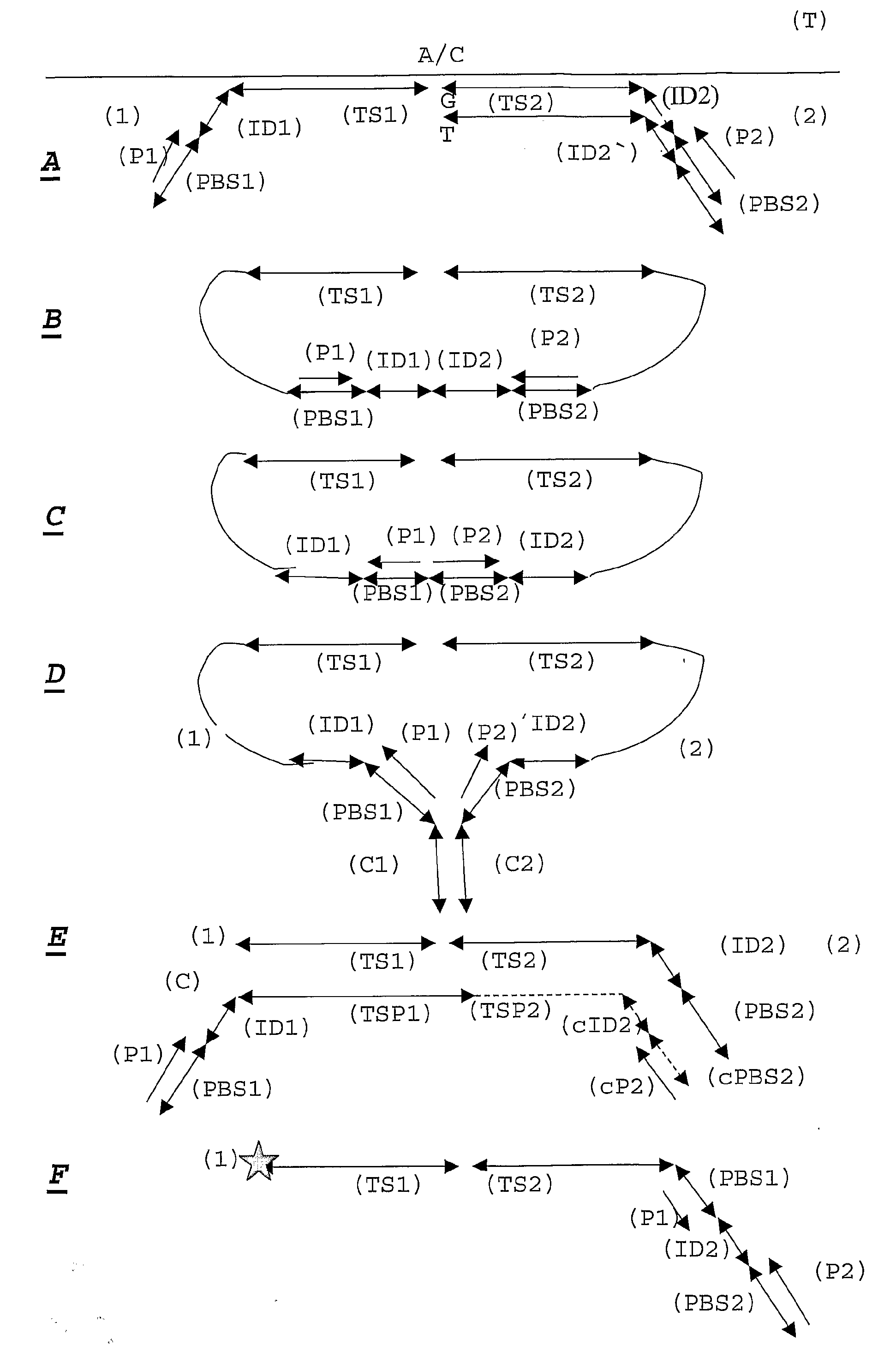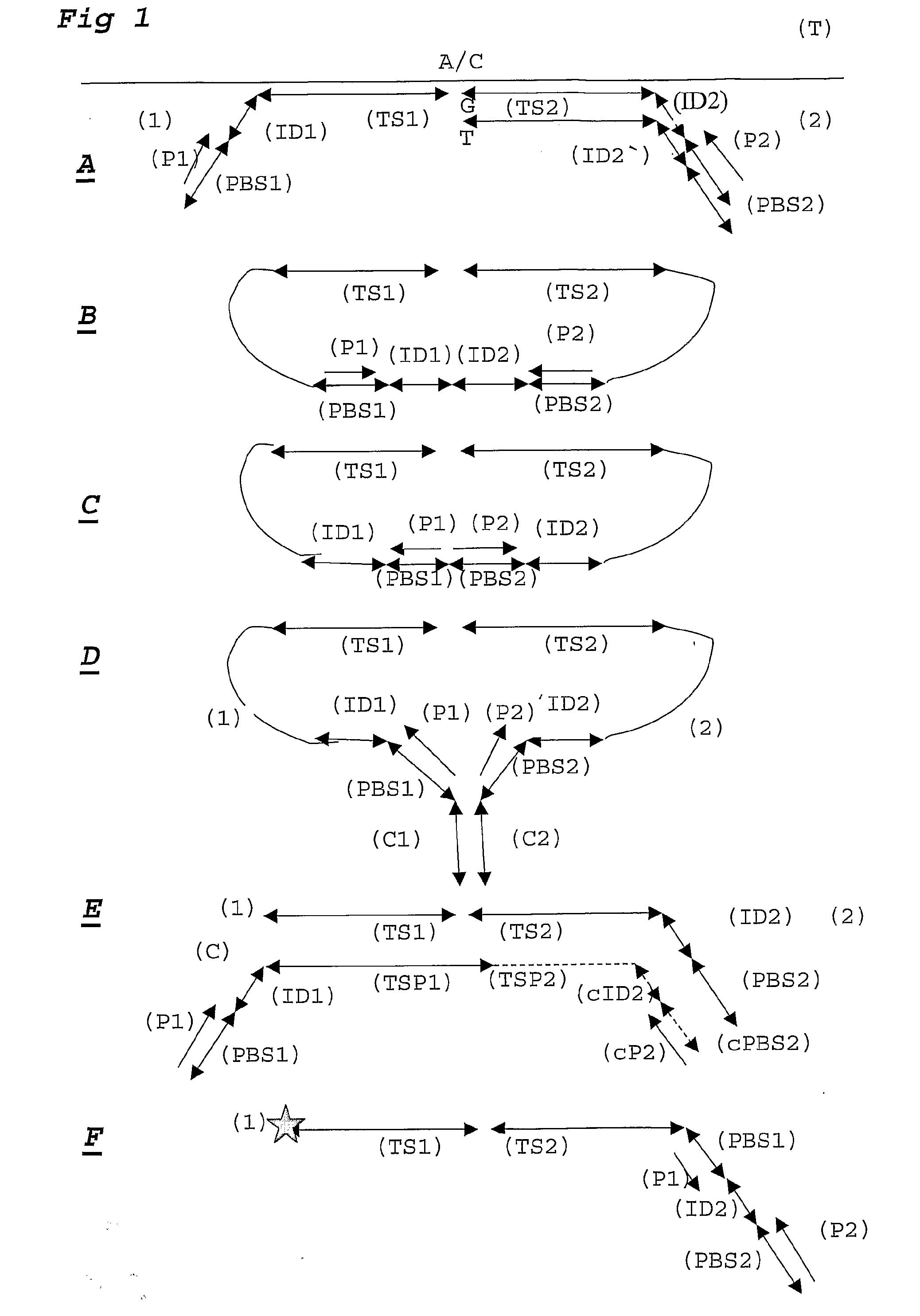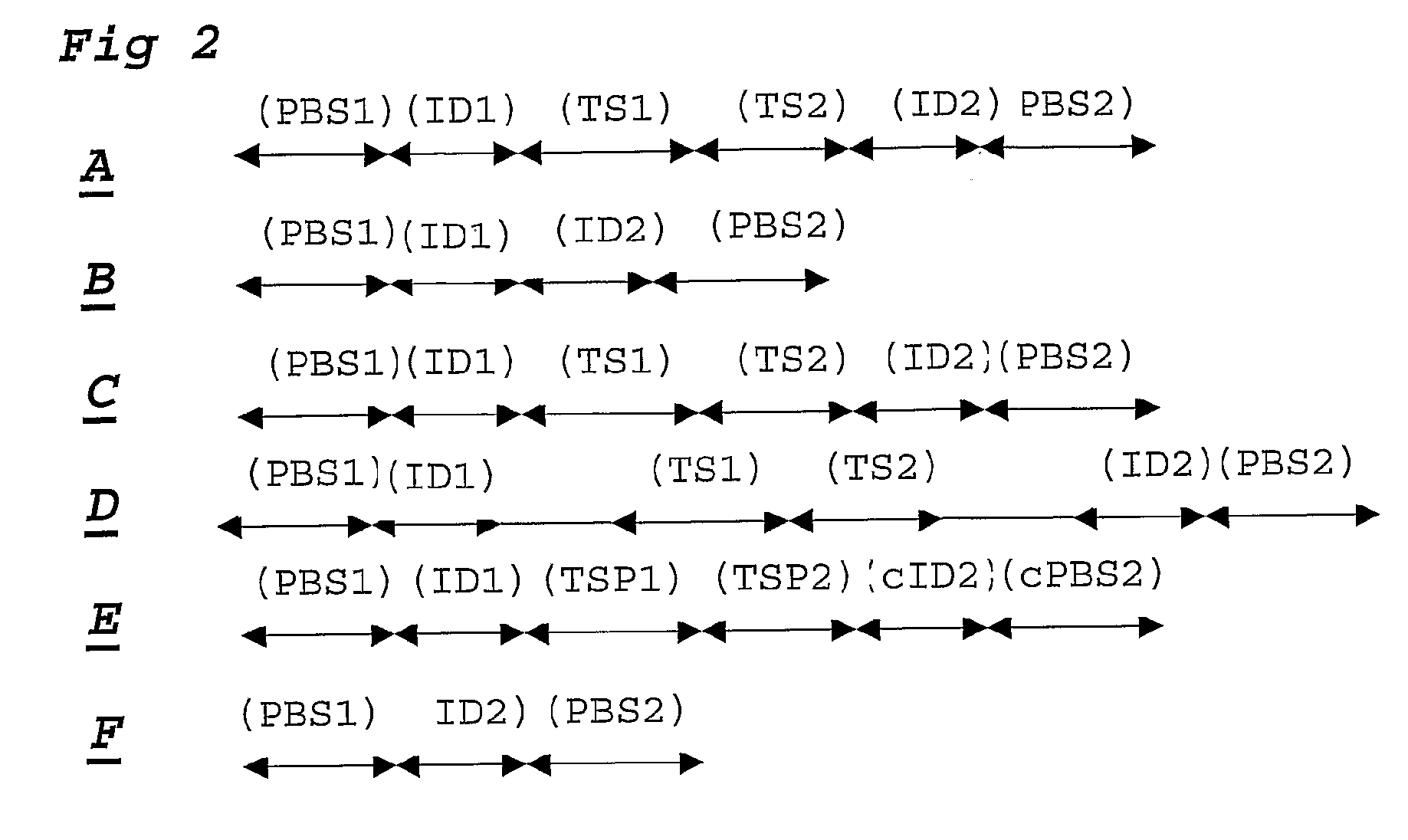High throughput sequence-based detection of snps using ligation assays
a sequence-based, ligation-based technology, applied in the field of molecular biology and biotechnology, can solve the problems of compromising the reliability of the assay, based on electrophoretic or array-based detection methods, and wide variation in the length of the probe used, so as to achieve high throughput, and improve the accuracy of the assay.
- Summary
- Abstract
- Description
- Claims
- Application Information
AI Technical Summary
Benefits of technology
Problems solved by technology
Method used
Image
Examples
example 1
[0106]For each DNA sample a ligation step is performed using probesets designed to detect 30 SNP loci, each comprising 2 alleles. Amplification primer sequences are based on the hybridizing sequences located on the surface of the Solexa high throughput sequencing system. In particular the PS sequence (PBS2) is situated at the 5′ part of the probe hybridising to TS2. The P7 sequence (PBS1) is located at the 3′ end of the probe hybridising to TS1. Adjacent to the 3′ end of the P5 sequence, a degenerate sample identifying sequence (SIS) is located comprising of a NNNNN sequence. A GC dinucleotide anchor sequence is following the SIS. Allele identification is made possible by locating a 5 base identifier sequence adjacent to the 3′ end of the GC clamp. The reverse complement of the sequencing primer binding site (sPBS) is following the allele identifier sequence (AIS).
[0107]The ligation mixture is amplified using P5 and P7 primer sequences in which the P5 primer contains a sample identi...
example 2
[0112]Sequence-based detection of amplified ligation products was performed using Sanger sequencing.
[0113]The experimental sequence involves a ligation step, first amplification using primers without SIS and GC-clamp, second amplification using primers containing SIS and GC-clamp, cloning the products of the second amplification into a bacterial plasmid with subsequent transformation to a bacterial host, single colony PCR amplification and sequence determination by Sanger sequencing. Maize parental lines B73 and Mo17 were used and sequenced. Over 200 amplified ligation products were sequenced to provide proof-of-principle for sequence-based SNP detection.
[0114]Parental lines B73 and Mo17 were selected. Ligation products were prepared using ligation probesets designed to detect 30 SNP loci. Amplification was performed using primers without SIS and GC-clamp. Fragments for cloning were prepared using primers containing SIS and GC-clamp. Cloning was performed using a TOPO TA Cloning® Ki...
PUM
| Property | Measurement | Unit |
|---|---|---|
| Tm | aaaaa | aaaaa |
| Tm | aaaaa | aaaaa |
| Tm | aaaaa | aaaaa |
Abstract
Description
Claims
Application Information
 Login to View More
Login to View More - R&D
- Intellectual Property
- Life Sciences
- Materials
- Tech Scout
- Unparalleled Data Quality
- Higher Quality Content
- 60% Fewer Hallucinations
Browse by: Latest US Patents, China's latest patents, Technical Efficacy Thesaurus, Application Domain, Technology Topic, Popular Technical Reports.
© 2025 PatSnap. All rights reserved.Legal|Privacy policy|Modern Slavery Act Transparency Statement|Sitemap|About US| Contact US: help@patsnap.com



